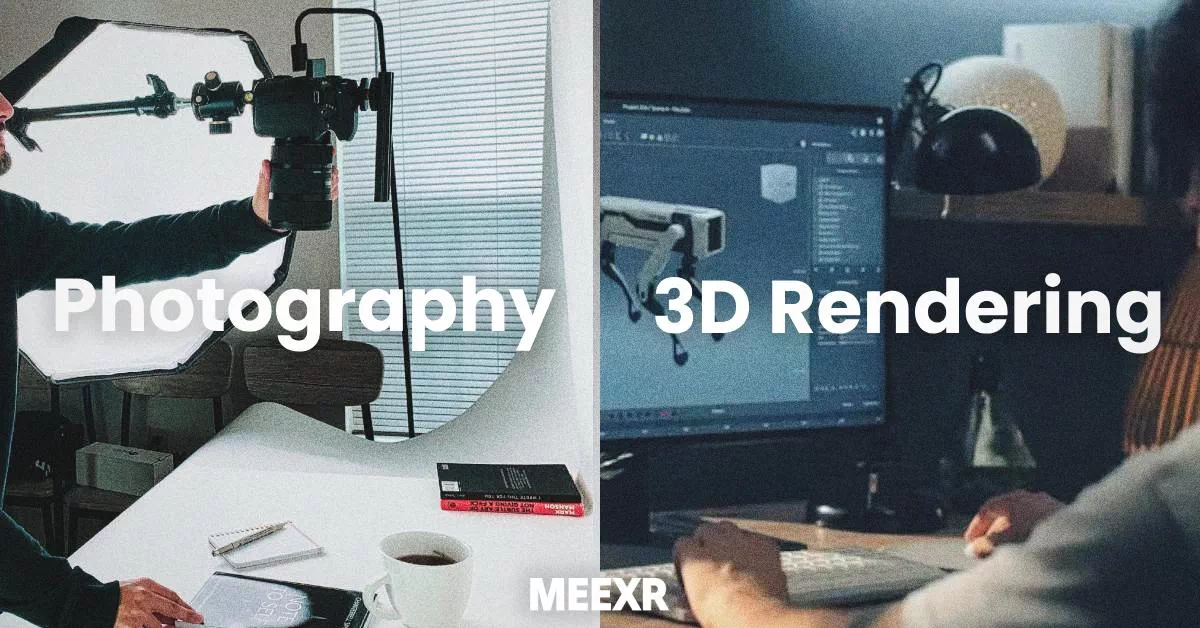Photography has long been the gold standard for visual content in industries like advertising, real estate, and product design. However, with the advancement of 3D rendering, more businesses are now opting for digital visualization. Using software like Blender, V-Ray, and Unreal Engine, 3D rendering delivers hyper-realistic images, creative control, and cost efficiency, outperforming traditional photography. This article highlights the key differences and explains why 3D rendering is the future. 3D Rendering VS Photography.
The Limitations of Traditional Photography
Traditional photography has been the go-to method for visual content, but it comes with several limitations that affect cost and creativity.
Challenges with Traditional Photography
- High Production Costs: Renting studios, hiring models, setting up lighting, and purchasing equipment can become quite expensive.
- Location Limitations: Finding the perfect setting or building custom sets adds both time and expense.
- Lighting Constraints: Lighting requires careful adjustment and considerable post-editing.
- Expensive Re-Shoots: Even minor mistakes during shoots can lead to additional sessions, incurring further costs.
Example: Product Photography
For a company launching a new smartphone, a traditional photography shoot requires:
- A controlled environment with professional lighting and equipment.
- Multiple shots, adjustments, and post-processing work to ensure the perfect image.
Now, let’s explore why 3D rendering offers a more efficient and cost-effective alternative.
Why 3D Rendering is the Better Choice
Unlike photography, 3D rendering is fully digital, offering greater flexibility, lower costs, and quicker turnaround times.
Advantages of 3D Rendering Over Photography
- Complete Creative Control: Create any scene, angle, or lighting setup without limitations.
- Faster Revisions: No need for reshoots. Edits are made digitally and rendered quickly.
- Cost-Effective: Eliminate the need for physical locations, props, or large teams.
- Works Anywhere: Everything is created within the software, meaning no location restrictions.
- Reusable Assets: Once a 3D model is created, it can be used for animations, AR, VR, and more.
Example: Product Visualization
For the smartphone launch example, instead of booking an expensive photo shoot, a designer can:
- Create a 3D model using tools like Blender or Cinema 4D.
- Adjust lighting and angles digitally, without any physical setup.
- Generate realistic renders for websites, ads, and social media.
- Easily create color variations without reshooting.
3D Rendering vs. Photography: A Direct Comparison
| Feature | Photography | 3D Rendering |
|---|---|---|
| Cost | Expensive (studio, lighting, location) | More affordable in the long run (once assets are set up) |
| Time Required | Days to weeks (shooting + editing) | Faster (once assets are created) |
| Creative Control | Limited to real-world constraints | Unlimited (any lighting, texture, or setting possible) |
| Revisions | Expensive (requires reshoots) | Quick and easy (edit and re-render) |
| Best For | Events, fashion, and real-world scenes | Product design, real estate, animation, and marketing |
Why 3D Rendering is the Future
With advancements in GPU rendering, AI upscaling, and photorealistic textures, 3D rendering is becoming virtually indistinguishable from real photography but with more advantages.
Key Benefits of 3D Rendering
- Scalability: Render as many variations as needed without additional costs.
- AR/VR Integration: 3D models are easily used in immersive experiences.
- Revolutionizing E-Commerce: Major brands like IKEA and Nike are switching to 3D product visualization for greater flexibility and cost savings.
Real-World Example: IKEA’s Shift to 3D
Over 75% of IKEA’s catalog images are now 3D renders, not photographs. By embracing 3D technology, IKEA has:
- Reduced production costs.
- Created realistic product images without expensive photoshoots.
- Allowed for quick customization of colors and materials.
This is just one example of how businesses are using 3D rendering to replace traditional photography.
Final Thoughts
While photography still holds its place, 3D rendering is rapidly becoming the future of digital content creation. Whether for product visualization, marketing, or animation, 3D rendering offers unmatched creative control, cost efficiency, and flexibility. As technology continues to evolve, businesses that adopt 3D rendering will stay ahead of the curve.


